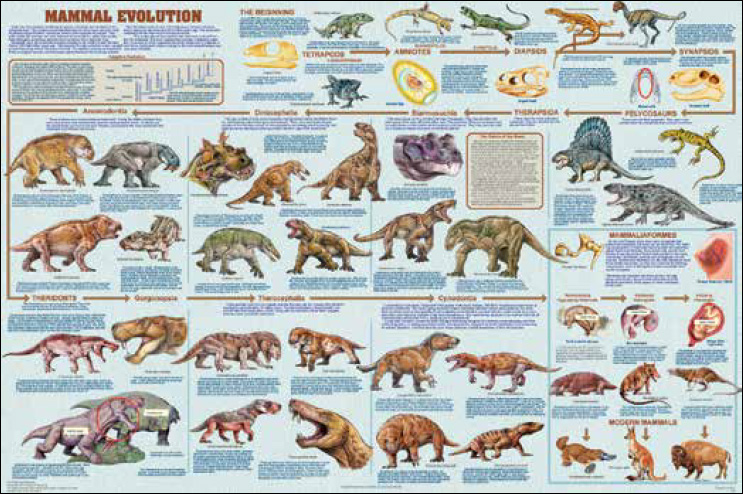|
|
|
Mammal Evolution |
|
 |
A311 Mammal Evolution
Mammals are an outstanding example of adaptive
radiation, the process by which organisms evolve into
a multitude of new forms. This poster explores that
subject, and it shows the results. It begins with the
first tetrapods (terrestrial vertebrate), then it shows
and explains how they evolved into three basic
groups based on skull characteristics.
The synapsids were the last group to evolve, and
they were the most advanced. They evolved around
324 million years ago. They are often referred to
as the “stem-mammals” or “proto-mammals.” They
were the dominant and largest terrestrial vertebrates
during the Permian, 299 to 251 million years ago.
Changes in the planet resulted in their mass extinction.
The reptiles adapted to fill the ecological niches
they left behind. The result was a world dominated
by dinosaurs. The earth changed again around 65
million years ago, and the dinosaurs became extinct.
The few surviving synapsids adapted into modern
mammals, which are also classified as synapsids.
|
|